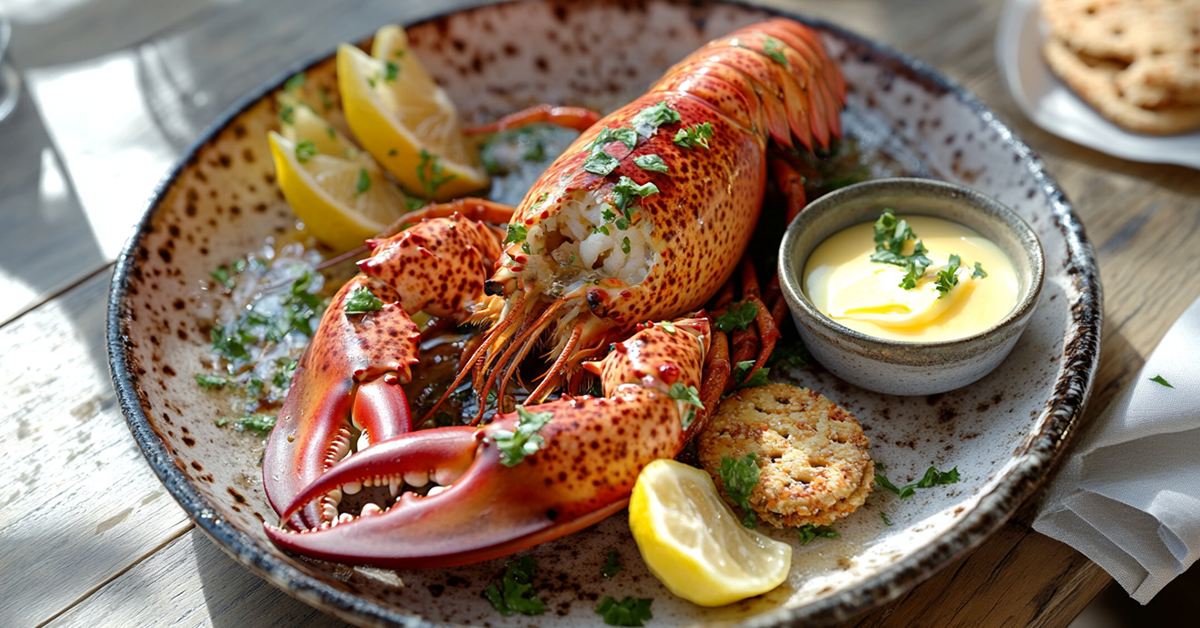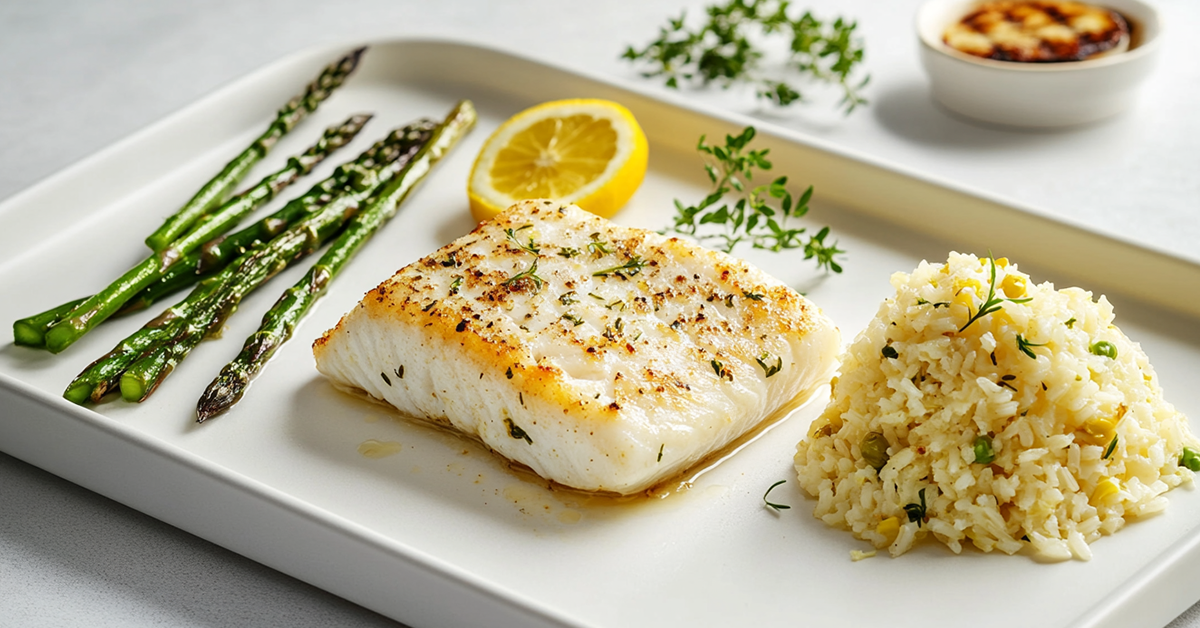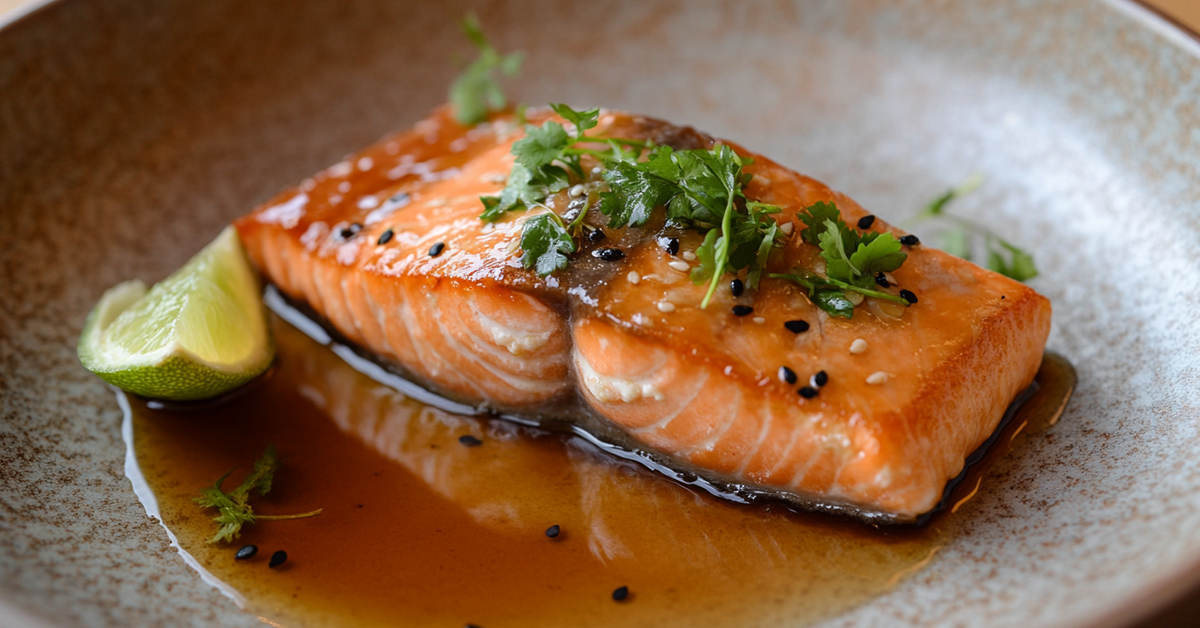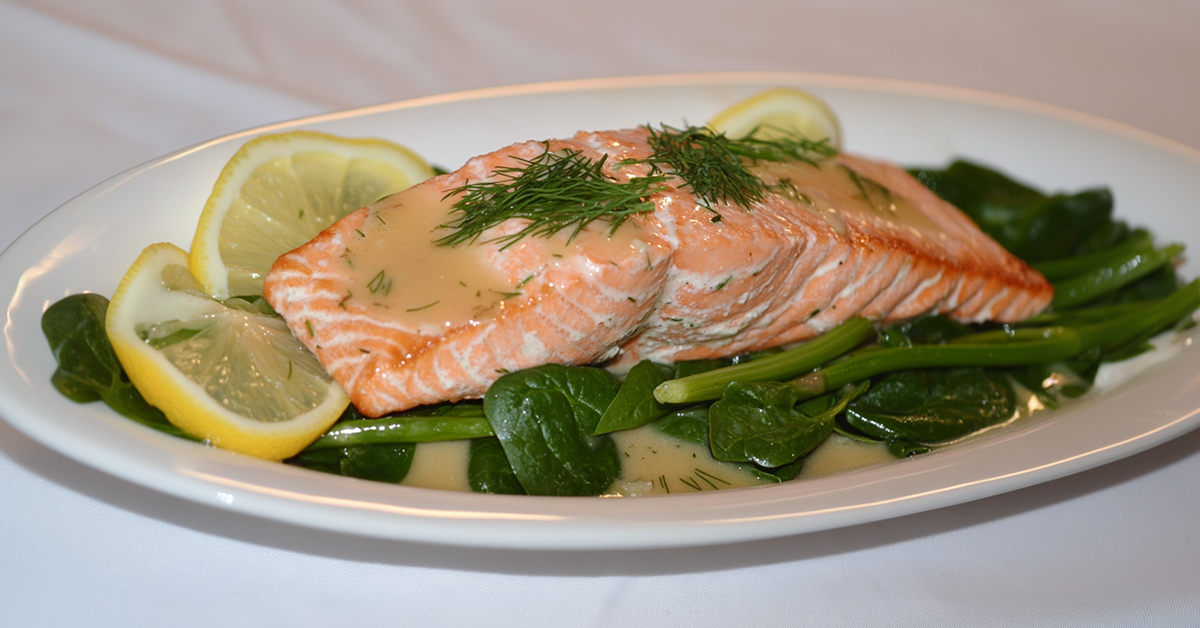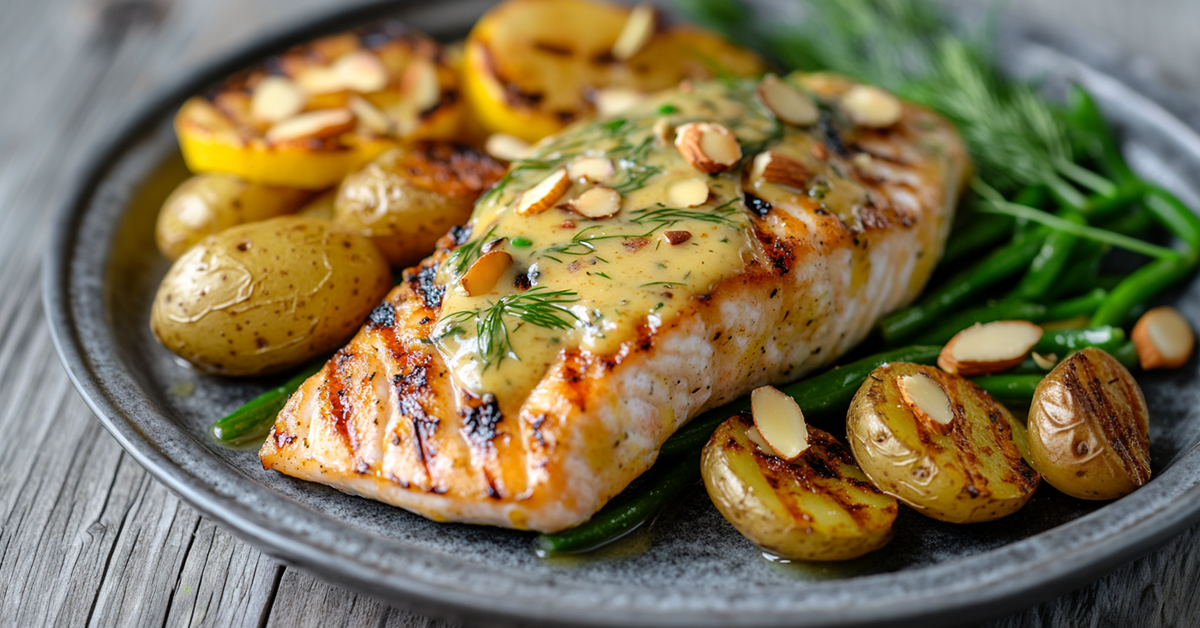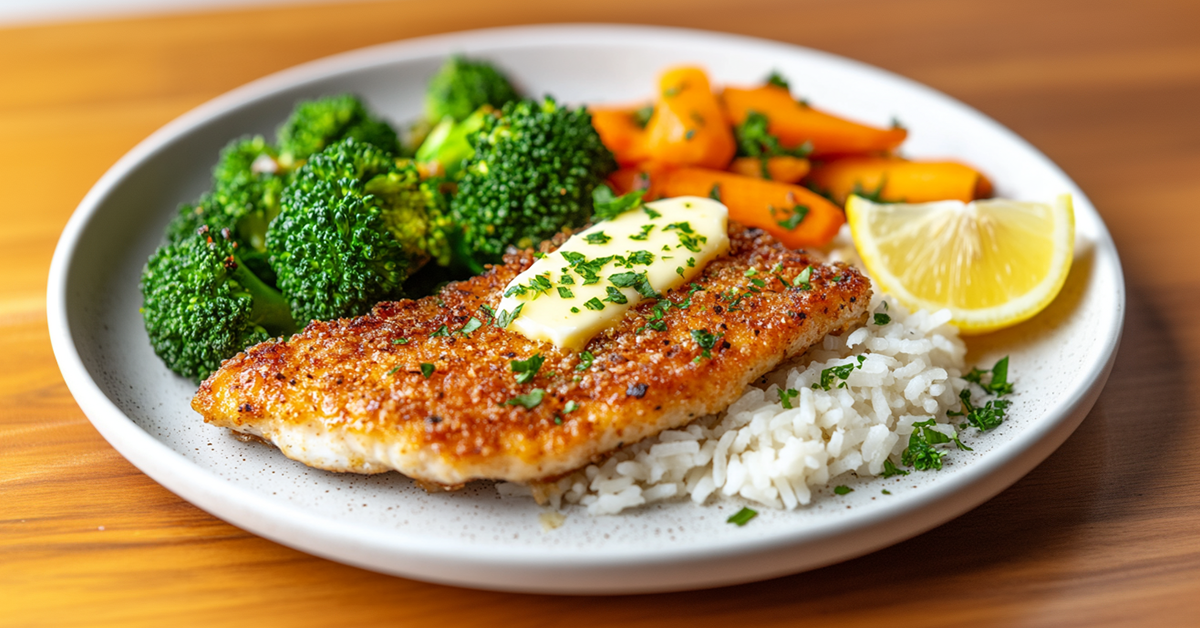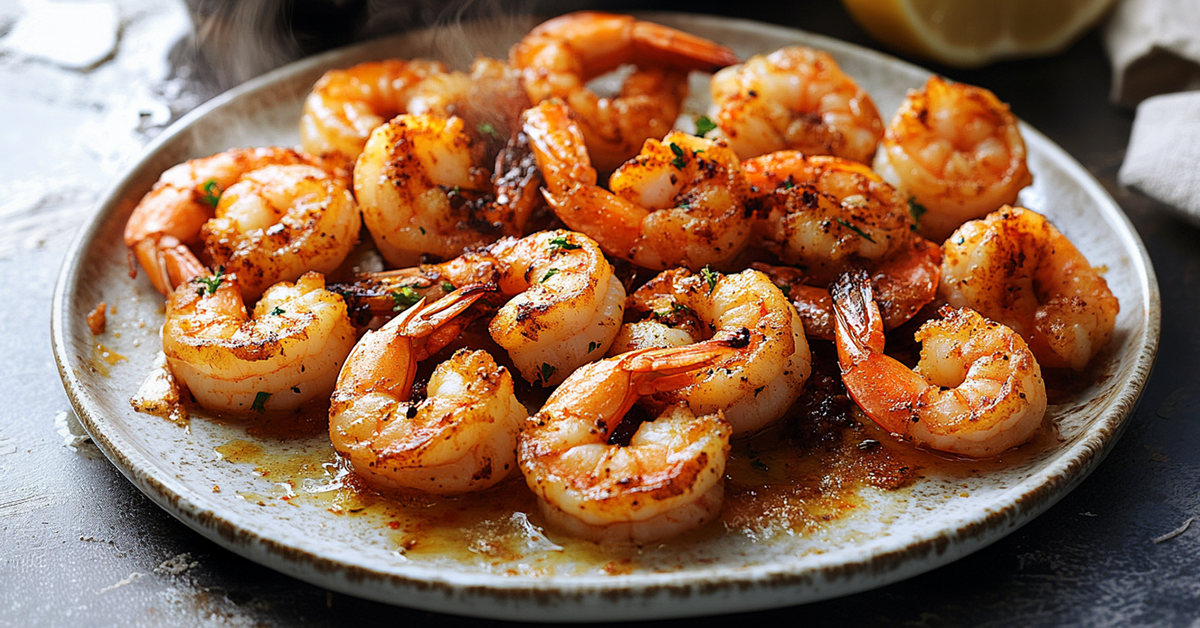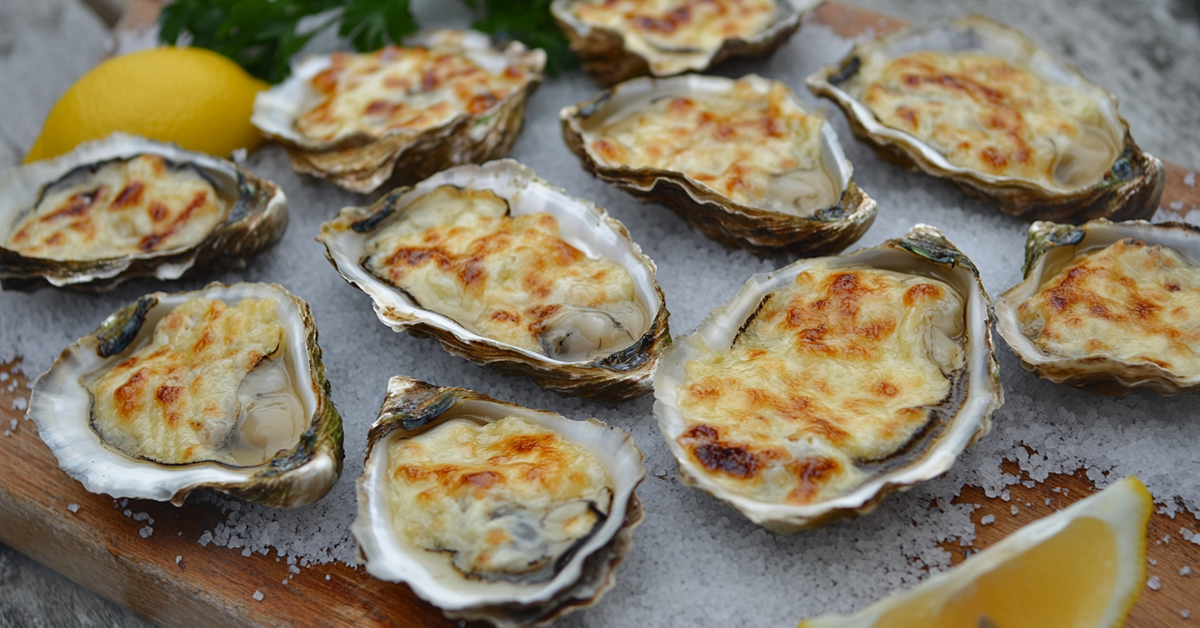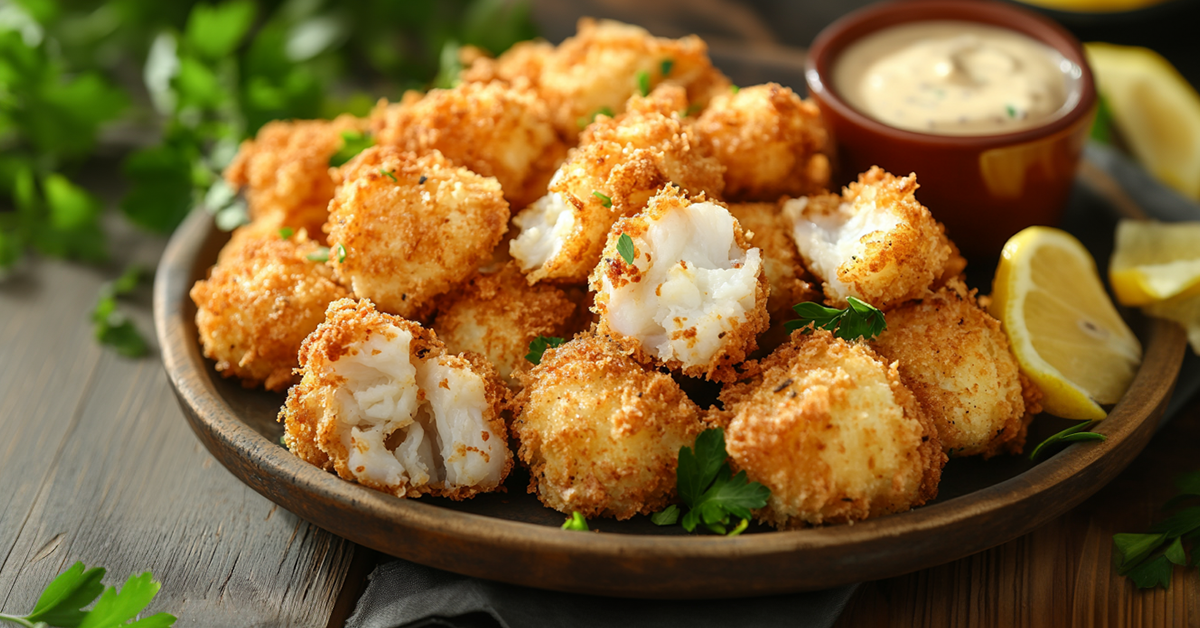Despite its reputation as a luxury dish, cooking the perfect boiled lobster at home often leads to disappointing results. Many home cooks miss a crucial step that separates restaurant-quality lobster from a mediocre meal.
You might think mastering a boiled lobster recipe requires professional culinary training. However, the secret lies in understanding a few key principles about timing and technique. In fact, once you learn the essential steps – from selecting the right lobster to determining how long to boil a lobster – you’ll discover that creating a perfectly cooked lobster is surprisingly straightforward.
This comprehensive guide will walk you through every step of preparing boiled lobster tails and whole lobsters, ensuring your next seafood dinner matches the quality of a fine dining experience.
Table of Contents
Choosing the Perfect Lobster for Boiling
Selecting the right lobster is the foundation of a successful boiled lobster recipe. Understanding the key differences between varieties and knowing what to look for will ensure you start with the best possible ingredient.
Different types of lobsters available in the market
When shopping for lobster, you’ll encounter two main categories. Cold-water lobsters, found in the North Atlantic around Maine and Canada, offer sweet, firm meat that’s ideal for boiling. Alternatively, warm-water lobsters, typically found in California and the Caribbean, have smaller claws and more tail meat.
How to identify fresh lobster
A fresh lobster shows clear signs of quality that you can easily spot. Look for these indicators:
- Active movement and lively behavior
- Clean shells without moss or seaweed growth
- Upright, intact antennae
- Ocean-fresh smell (avoid any strong fishy or ammonia odors)
Size considerations when selecting lobster for boiling
For the perfect boiled lobster, size matters significantly. Generally, lobsters weighing between 1¼ to 1½ pounds are ideal for the average eater. These “quarters” provide a good balance of meat yield and tenderness. Additionally, a good hard-shell lobster will yield approximately 19-22% cooked meat.
Seasonal factors affecting lobster quality
The time of year significantly impacts lobster quality and availability. Peak harvest season extends from May to November in New England. Specifically, late summer to early fall offers the most abundant and flavorful catches.
Hard shell lobsters are typically harvested between fall and spring. These lobsters contain about 20% more meat than their soft-shell counterparts and are more durable for transport. Furthermore, soft-shell lobsters, available during summer months, offer more tender meat but less yield per pound.
Read also: Sous Vide Lobster Recipe
The Science Behind Perfect Boiled Lobster
The science behind boiling lobster involves more than just dropping it in hot water. Understanding the underlying principles will help you achieve that perfect, tender texture every time you prepare your boiled lobster recipe.
Understanding lobster meat composition
Lobster meat consists of protein fibers held together by connective tissue. The meat contains about 80% water, 18% protein, and minimal fat, making it both nutritious and delicate to cook. The protein structure changes dramatically with heat, which explains why precise cooking is essential.
How heat affects lobster meat
Temperature plays a crucial role in transforming raw lobster into a perfectly cooked dish. Here’s what happens at different stages:
- At 140°F (60°C): Proteins begin to denature, turning meat opaque
- At 165°F (74°C): Connective tissues start to break down
- Above 180°F (82°C): Meat becomes tough and rubbery
The role of salinity in boiling lobster
Salt concentration in your cooking water affects more than just flavor. Moreover, the right amount of salt (about 2 tablespoons per quart of water) helps:
- Maintain the natural flavors of the lobster
- Create the proper environment for even cooking
- Enhance the meat’s natural sweetness
- Preserve the texture of the meat
Temperature control principles
Maintaining consistent temperature throughout the cooking process is vital for perfect results. Consider these essential points:
- Start with rapidly boiling water
- Use enough water to fully submerge the lobster
- Keep the pot covered to maintain temperature
- Avoid overcrowding the pot
The relationship between heat and cooking time follows a simple principle: as the size of the lobster increases, accordingly, the cooking time must be adjusted. Meanwhile, the water temperature should remain constant at a gentle boil (around 212°F/100°C at sea level).
A common mistake is assuming that more heat equals better cooking. Consequently, many home cooks blast their lobsters with excessive heat, resulting in tough, chewy meat. Instead, aim for a steady, gentle boil that allows the heat to penetrate the meat evenly while preserving its delicate texture.
Understanding these scientific principles will help you achieve consistently excellent results with your boiled lobster. Rather than following recipes blindly, you’ll know exactly why each step matters and how to adjust your technique for perfect results every time.
Read also: Steamed Lobster Recipe
Essential Tools and Equipment
Success with your boiled lobster recipe starts with having the right tools at hand. First thing to remember, proper equipment ensures both safety and optimal results.
Here are the essential items you’ll need:
- A large stockpot (16-20 quart capacity) with lid
- Long-handled tongs for safe handling
- A sharp kitchen knife for preparation
- Kitchen shears for shell cutting
- A reliable kitchen timer
- Instant-read thermometer for precise cooking
- Colander for draining
- Serving platter with raised edges
- Seafood crackers and picks
- Heavy-duty oven mitts
Your stockpot size is particularly important. A 16-20 quart pot can comfortably cook two 1½-pound lobsters at once. Equally important is ensuring your pot has a tight-fitting lid to maintain consistent temperature throughout the cooking process.
In particular, the long-handled tongs deserve special attention. They keep your hands safely away from the boiling water and make handling the lobster manageable. Altogether, these tools not only make the cooking process safer but also more efficient.
The instant-read thermometer serves a dual purpose. Certainly, it helps you maintain the proper water temperature, and it can also verify when your lobster reaches the ideal internal temperature for serving.
For preparation and serving, kitchen shears and a sharp knife are indispensable. These tools help you access the meat easily once cooked. The seafood crackers and picks, on the other hand, allow your guests to enjoy their meal without struggling with the shell.
A large colander is essential for proper draining, as it prevents the lobster from sitting in hot water after cooking. The serving platter should have raised edges to contain any liquid that might escape from the shells.
As an illustration, think of these tools as your lobster cooking toolkit – each piece plays a specific role in creating the perfect boiled lobster experience. Without proper equipment, even the freshest lobster and most precise timing won’t yield the best results.
Read also: Butter Poached Lobster Recipe
Remember to arrange all your tools before starting the cooking process. This preparation ensures a smooth cooking experience and helps you focus on timing and technique rather than searching for equipment mid-cook.
How Long to Boil a Lobster: Size-Based Guide
Precise timing makes the difference between perfectly tender and disappointingly tough lobster meat. Your success depends on understanding the relationship between lobster size and cooking duration.
Size-to-time ratio explanation
The cooking time for your boiled lobster recipe varies primarily based on weight. Here’s a simple guide:
| Lobster Weight | Cooking Time |
|---|---|
| 1-1.25 lbs | 8-10 minutes |
| 1.5-2 lbs | 10-12 minutes |
| 2-3 lbs | 12-14 minutes |
| 3-5 lbs | 14-16 minutes |
Temperature monitoring techniques
Initially, bring your pot to a rolling boil (212°F/100°C). Subsequently, maintain this temperature throughout cooking. Use these techniques for consistent results:
- Keep the lid on except when adding lobsters
- Monitor water temperature with an instant-read thermometer
- Adjust heat as needed to maintain steady boiling
Signs of perfectly cooked lobster
Essentially, a perfectly boiled lobster shows clear signs of doneness:
- Shell turns bright red
- Tail meat feels firm to touch
- Leg meat pulls out easily
- Antennae come off with slight pressure
- Tomalley (green substance) turns greenish-white
Common timing mistakes to avoid
Notably, even experienced cooks sometimes make these timing errors:
- Starting the timer before water returns to boil
- Overcrowding the pot, which drops water temperature
- Lifting the lid too frequently
- Not adjusting time for multiple lobsters
- Failing to consider altitude effects on boiling point
Ultimately, your cooking success depends on careful observation and timing adjustments. Remember that these times serve as guidelines – factors like altitude and starting water temperature may require slight modifications. Consider extending cooking time by 2-3 minutes when cooking multiple lobsters simultaneously.
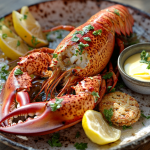
Boiled Lobster Recipe
- Total Time: 15 minutes
- Yield: 4 servings 1x
- Diet: Gluten Free
Description
Mastering the art of boiling lobster at home brings the taste of coastal dining right to your kitchen. This classic boiled lobster recipe combines traditional New England methods with precise timing for perfect results every time.
This straightforward boiled lobster recipe delivers tender, succulent meat that’s ready in under 15 minutes. The method uses simple seasonings to enhance the lobster’s natural sweetness while maintaining its pure ocean flavor.
Ingredients
- 2–4 live lobsters
- Sea salt or kosher salt (2 tablespoons per quart of water)
- Water (enough to cover lobsters)
- Optional aromatics:
- 2 large onions, quartered
- 10 garlic cloves, halved
- 2 lemons, quartered
- 5 celery stalks, quartered
Instructions
- Fill your pot 2/3 full with water
- Place pot on medium-high heat and bring to a rolling boil
- Add salt and optional aromatics
- Carefully lower lobsters headfirst into the water, one at a time
- Cover pot immediately to maintain heat
- Once water returns to boil, start your timer based on lobster size
- Halfway through cooking, stir the lobsters gently
- Check internal temperature (should reach 135-140°F)
- Remove lobsters and place in colander
- Cool under running water or in ice bath to stop cooking
Notes
– For optimal results, use the weight of individual lobsters to determine cooking time, not total weight
– Keep rubber bands on claws until cooking is complete
– Never cook dead lobsters as they can result in mushy, inedible meat
– Pierce body and tail with a sharp knife after cooking to drain excess water
- Prep Time: 5 minutes
- Cook Time: 10 minutes
- Category: Seafood
- Method: Boiling
- Cuisine: American
Primarily, your success depends on starting with fresh, live lobsters and maintaining proper water temperature throughout cooking. Undoubtedly, the most crucial factor is timing – watch your lobsters carefully and avoid overcooking, which can result in tough, rubbery meat.
Serving and Presentation Tips
The art of presenting your boiled lobster elevates a simple seafood dish into an impressive dining experience. Primarily, the key lies in timing your presentation – serve the lobster while it’s still warm but comfortable to handle.
For an elegant presentation, arrange your boiled lobster on a large platter lined with fresh seaweed or crisp lettuce leaves. Essentially, this creates a stunning backdrop that makes the bright red shell pop. Consider these classic garnishing options:
- Fresh lemon wedges
- Sprigs of fresh dill or parsley
- Melted butter in ramekins
- Cherry tomatoes
- Fresh herb sprigs
- Cucumber ribbons
Notably, temperature plays a crucial role in serving. Let the lobster rest for 3-5 minutes after cooking, allowing the meat to settle while remaining warm. Place small bowls of melted butter on the table, one for every two guests. Warm butter enhances the natural sweetness of the lobster meat.
Above all, consider your side dish selection carefully. Light accompaniments work best – think steamed asparagus, corn on the cob, or a simple green salad. These sides complement without overwhelming the delicate lobster flavor.
For a traditional New England touch, serve your boiled lobster with drawn butter and a wedge of lemon. Place crackers and picks strategically around the table, ensuring each guest has easy access to these essential tools.
Pro tip: Create butter infusions by adding minced garlic, fresh herbs, or a splash of white wine to your melted butter. Therefore, you’re offering guests various flavor profiles to experiment with.
Ultimately, presentation isn’t just about esthetics – it’s about creating a complete dining experience. Position the lobster with the tail and claws spread in a star pattern, making it both visually appealing and easily accessible. This arrangement allows guests to tackle their lobster without awkward maneuvering.
Remember to provide plenty of napkins and perhaps even bibs for a authentic seafood house experience. A finger bowl with warm water and a slice of lemon offers guests a practical way to clean their hands throughout the meal.
The final touch? Place a small bowl near each setting for discarding shells. This thoughtful detail keeps the dining area tidy and allows guests to focus on enjoying their perfectly prepared boiled lobster.
Read also: Boiled Shrimp Recipe
Health Benefits of Lobster
Looking beyond its delectable taste, your boiled lobster recipe offers remarkable health advantages. Understanding these benefits helps you appreciate why this cooking method is ideal for preserving lobster’s nutritional value.
Primarily, lobster stands out as an excellent source of lean protein. A properly boiled lobster maintains its protein integrity, offering approximately 28 grams of protein per serving. Notably, this preparation method helps preserve essential nutrients that might otherwise be lost through other cooking techniques.
Consider these key nutrients found in boiled lobster:
- High-quality complete protein
- Omega-3 fatty acids
- Vitamin B12
- Zinc and selenium
- Copper and iodine
- Essential amino acids
The gentle boiling process plays a vital role in maintaining these nutritional components. Whenever you prepare lobster using the proper boiling technique, you’re essentially locking in these valuable nutrients. Furthermore, this cooking method requires minimal added fats or oils, making it an excellent choice for health-conscious dining.
Your cardiovascular health can benefit from regular consumption of properly prepared lobster. The combination of lean protein and omega-3 fatty acids supports heart health, especially when you choose boiling over frying or other high-fat cooking methods.
Regarding mental wellness, the zinc and copper content in lobster contributes to cognitive function. Interestingly, these minerals are better preserved through boiling compared to other cooking methods. As you perfect your boiling technique, you’re simultaneously maximizing these nutritional benefits.
For those monitoring their caloric intake, boiled lobster presents an excellent option. Here’s a quick comparison of protein sources:
| Food (3 oz serving) | Calories | Protein |
|---|---|---|
| Boiled Lobster | 83 | 17g |
| Grilled Chicken | 140 | 26g |
| Beef Sirloin | 213 | 23g |
The mineral content in lobster supports various bodily functions. Iodine, naturally present in shellfish, aids thyroid function. Selenium, another crucial mineral, helps maintain a healthy immune system. Through proper boiling, these minerals remain bioavailable for your body to utilize effectively.
For athletes and fitness enthusiasts, boiled lobster serves as an excellent protein source for muscle recovery and growth. The amino acid profile is particularly beneficial for tissue repair and maintenance. Plus, the low-fat content makes it an ideal choice for those following a lean protein diet.
References:
– Healthline
Remember that the nutritional benefits of your lobster largely depend on proper preparation. Overboiling can diminish some nutritional value, which is why following the precise timing guidelines mentioned earlier is crucial. By mastering the art of boiling lobster, you’re not just creating a delicious meal – you’re preparing a nutrient-rich dish that supports overall health and wellness.
Nutritional Information
Understanding the nutritional profile of your boiled lobster helps you make informed dietary choices. Let’s break down the exact nutritional content you’ll get from this seafood delicacy.
A one-cup serving (145g) of boiled lobster provides these key nutrients:
| Nutrient | Amount | % Daily Value |
|---|---|---|
| Calories | 129 kcal | – |
| Protein | 27.6g | 54% |
| Total Fat | 1.3g | 2% |
| Carbohydrates | 0g | 0% |
| Cholesterol | 212mg | 71% |
| Sodium | 360mg | 16% |
Primarily, your boiled lobster serves as an excellent protein source, delivering all essential amino acids your body needs. Indeed, the protein quality matches or exceeds that found in milk, red meat, or soy products.
The mineral content in your boiled lobster is notably impressive:
- Copper: 198% of Daily Value
- Selenium: 190% of Daily Value
- Zinc: 53% of Daily Value
- Vitamin B12: 51% of Daily Value
In essence, a single serving provides substantial amounts of omega-3 fatty acids. A three-ounce portion contains between 200-500 milligrams of combined EPA and DHA. These essential fatty acids support various bodily functions, fundamentally contributing to heart and brain health.
For those monitoring sodium intake, it’s worth noting that lobster naturally contains sodium, with one cup providing approximately 964mg. This represents about 42% of the recommended daily limit for most people.
The cholesterol content might seem high at first glance, showing 210mg per serving. Nevertheless, recent research suggests that dietary cholesterol from seafood like lobster has minimal impact on blood cholesterol levels for most healthy individuals.
Regarding micronutrients, your boiled lobster contains:
- Calcium: 139.2mg
- Magnesium: 62.4mg
- Choline: 117.3mg
- Vitamin B5: 2.4mg
The nutritional profile varies slightly based on the type of lobster. Cold-water lobsters typically offer more concentrated nutrients compared to warm-water varieties. The cooking method – boiling – helps preserve these valuable nutrients while keeping the calorie content low at just 129 calories per cup.
When comparing protein sources, lobster stands out for its impressive protein-to-calorie ratio. The 27.6 grams of protein per serving comes with minimal fat content – just 1.3 grams. This makes your boiled lobster recipe an excellent choice for high-protein, low-fat dietary requirements.
References:
– Carbmanager
– Healthline
Conclusion
Mastering the art of boiled lobster transforms an intimidating luxury dish into an achievable home-cooking triumph. Armed with knowledge about lobster selection, precise timing, and proper tools, you’ll create restaurant-quality results right in your kitchen.
Remember that success lies in details – choosing fresh lobster, maintaining proper water temperature, and following size-based cooking times. These fundamentals, combined with scientific understanding of how heat affects lobster meat, guarantee tender, flavorful results every time.
Beyond its impressive taste, properly boiled lobster offers substantial nutritional benefits while remaining a lean protein choice. Your careful attention to cooking technique preserves these valuable nutrients while creating an elegant dining experience.
Start with smaller lobsters as you build confidence in your technique. Though cooking lobster might seem challenging at first, each attempt brings you closer to perfection. Soon enough, you’ll serve impressive seafood feasts that rival any fine dining establishment.

